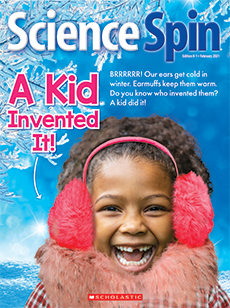Making Crayons Lesson Plan
Academic Standards
Reading Objective:
Children will read about the sequence of steps that the Crayola factory uses to turn clear, melted wax into solid crayons of many different colors.
Next Generation Science Standards:
K-2—ETS1 Engineering Design
Vocabulary:
billion, factory, melted, mold
Use these questions to check students’ understanding and stimulate discussion:
1. What are crayons made of? (wax)
2. How do workers color the melted wax? (They dump colored powder into it.)
3. What happens after the crayons get labels? (The workers put them into crates.)
4. What do you think was the most interesting part of making crayons? Draw and write about it. (Answers will vary.)
Go online to print or project the Reading Checkpoint.
- The Crayola company makes 3 billion crayons a year. That’s enough crayons, lined up end to end, to circle the Earth six times.
- By age 10, the average kid uses up 720 crayons!
- The most popular crayon color in the United States is blue.
Materials: used crayons, soap and water, muffin tin or cups (microwavable if you are using a microwave instead of an oven), oven or microwave, refrigerator, pencils, skill sheet
Overview: Children will learn how to heat old crayons in muffin tins to make new ones.
Directions:
- Tell kids they will practice being engineers, who follow a set of steps to make something. They will make new crayons out of old ones! .
- Gather your old classroom crayons. Soak them in warm, soapy water so the labels come off easily. Remove the labels, then let the crayons dry.
- Let children arrange the old crayons in a muffin tin or cup.
- Heat the crayons in an oven or microwave. (In oven: 15-20 mins at 250 degrees F. In microwave: About 5-8 minutes or until the crayons melt; check every 2 minutes.)
- Pull the muffin tin out of the oven/microwave and let rest 15 minutes. Next, if possible, put in the refrigerator for 15-30 minutes. Invert the tin and tap to release the crayons.
- Kids can use the skill sheet to record the steps in this process!
